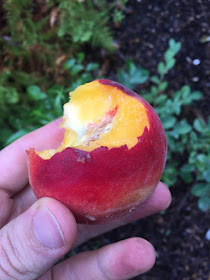Kumquats are Citrus with edible fruit that closely resembles that of the Orange but it is much smaller, being approximately the size and shape of a large Olive. They differ also by having edible sweet rinds with relatively sour flesh inside. Kumquats are a cold hardy Citrus.
The plants are native to Southern Asia. The earliest historical reference to Kumquats appears in Chinese literature in the 12th century. They have long been cultivated throughout Asia in India, Japan, Taiwan, the Philippines, and China. They were introduced to Europe in 1846 by Robert Fortune, collector for the London Horticultural Society, and shortly thereafter into North America.
They are slow-growing small trees, from 2m to 4.5m tall, with dense branches, sometimes bearing small thorns. The leaves are dark glossy green, and the flowers are white, similar to other citrus flowers. Depending on size & maturity, the kumquat tree can produce hundreds or even thousands of fruits each year.
Here are the varieties available in New Zealand:
Nagami Kumquat: is oval in shape. It has a relatively small number of segments (four to five) and contains 2 to 5 seeds. Nagami fruit have a deep orange colour and a distinctive flavour. The rind is pleasantly sweet with very sour juice & flesh. A mature specimen can bear a crop of up to 3500 fruits. Nagami is in season from April to July in NZ. This was the first kumquat to arrive in the Western world. The plant was introduced from China to London in 1846 by Robert Fortune, plant explorer for the Royal Horticultural Society. I have a Nagami in my garden at home but is currently very small.
Indio Mandarinquat: came about from an open pollinated seedling that sprung up under a large old Nagami tree at UCLA. It is a kumquat-mandarin hybrid with orange bell-shaped fruit much larger than a typical kumquat. The sweet peel is eaten along with the tart flesh for a unique flavour combination. This variety usually blooms during the summer months and produces abundant crops of fruit that stay on the tree during the winter months. Indio looks like a giant kumquat, with similar tangy-sweet flesh and edible rind. A very decorative tree. I have one in my garden at home quite large at 1.5m and is four years old. It is however a very reluctant fruiter and I've only ever had two fruits off him. This spring i'll give him some extra TLC to see if this helps with fruiting. Maybe some Potassium in the form of ‘Sulphate of Potash’ to promote the growth of flowering buds (and therefore fruit).

Meiwa Kumquat: is thought to be a natural hybrid between the oval Nagami and round Marumi kumquats. The most distinctive features of this Kumquat are the short round form, the more numerous sections (commonly seven), the very thick and sweet rind and comparatively sweet flavour, and the low seed content. Many fruits are seedless. This is the best kumquat variety for eating fresh as it has the sweetest juice and is the most popular Kumquat in NZ. I tried one at the Garden Centre the other day & it has surprisingly sweet skin! The flesh is still a little tart though. Meiwa was introduced from Japan between 1910 and 1912. The tree is a dwarf, frequently thornless, the leaves differ from those of other kumquats in being very thick and rigid and partly folded lengthwise & pitted with numerous dark-green oil glands.
Eustis Limequats: are a hybrid of Mexican Limes & a Round Kumquat made in 1909. Trees are more cold-tolerant than a regular lime but not as hardy as the Kumquat. Fruit is used much like a Lime. I tasted one recently and it was like eating a Lime so i don't really see the appeal apart from the novelty factor. Limequats are oval or round, 2-4 cm wide with thin, pale-yellow, smooth, glossy skin with prominent oil glands. Inside the flesh is edible but very acid like a Lime. It is light greenish in 6 to 9 segments, juicy, with 5 to 12 small seeds. Trees are early ever-bearing but mainly in autumn to winter. The tree produces pure-white flower buds and flowers prolifically.

Calamondin: is an acid fruit that is most commonly grown in the Philippines. It is believed to be a natural hybrid of a Kumquat & a Mandarin Orange. It is also sometimes called a Calamansi. It is an unusual but beautiful tree, its form is upright & columnar, the leaves are small & dense giving the tree a fine textural appearance. The fruits are small, round, & orange at full maturity ripening around May. The orange flesh is acidic, juicy, and contains a few seeds. Calamondin trees flower and set fruit intermittently throughout the year, adding to the decorative appeal of these trees. It can come in variegated form, which i have at home, with yellow & green marbled leaves and striped fruit ripening to Orange colour. The fruit have a thin sweet mandarin flavoured skin and a tart sour-mandarin flavoured flesh. Culinary uses are mainly to add a citrus zing to drinks. Other uses are for citrus flavour in baking & Marmalade.

























